#alaskavacation
Text
#Alaska#alaska#alaskatravel#alaskavacation#alaskacruise#alaskaexcursion#alaskaexcursions#alaskatour#haines
0 notes
Photo
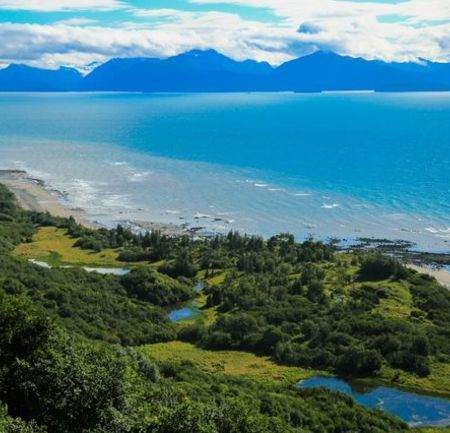
Travel to Alaska through this luxury rental this New Years Eve
Escape the ordinary and embrace the extraordinary. Experience Alaska like never before through this exquisite luxury rental this New Year's Eve.
0 notes
Text
Denali National Park in Alaska

Get lost in the wilderness of Denali National Park, where breathtaking landscapes await at every turn.
0 notes
Text
Denali National Park in Alaska
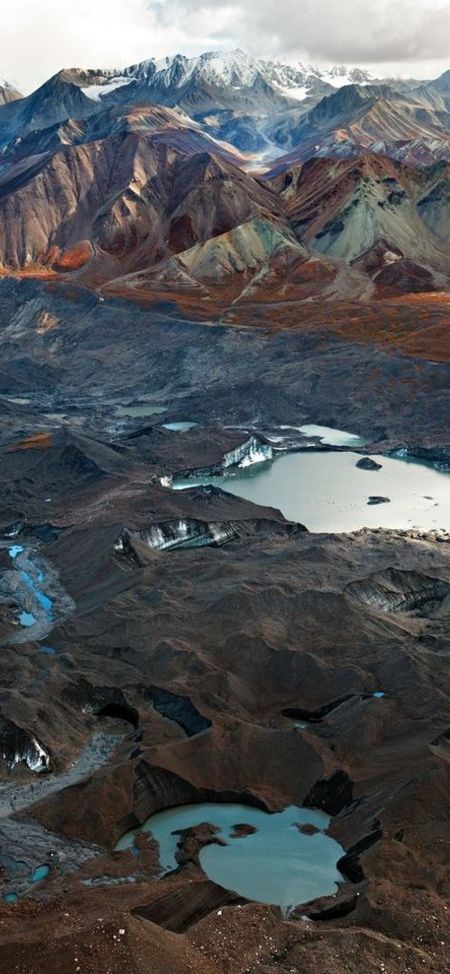
Get lost in the wilderness of Denali National Park, where breathtaking landscapes await at every turn.
0 notes
Text
Hi, I’m Steffan Martin, a passionate traveler who likes to explore new places and cultures. Alaska is one of my dream destinations, a land of endless nature and adventure. Alaska has stunning sights and experiences, from majestic glaciers and mountains to diverse wildlife and native heritage. I’m into all kinds of outdoor activities, such as hiking, skiing, fishing, cruising, or flightseeing, and I’m always up for a challenge and a thrill. That’s why I’m planning to visit Alaska soon and try some of the best vacation packages available. Follow me as I share my journey and tips on how to make the most of your Alaska vacation.
1 note
·
View note
Photo

July Featured Author John Williams #alaska #traveljournal #alaskajournal #travelalaska #camping #alaskavacation #crosscountry #books #ohiowriter #author #writingcommunity #reader #5starbooks #readingcommunity #journalist #travelwriter #travel #storyteller (at Monday Creek Publishing) https://www.instagram.com/p/CQ9-cznle9v/?utm_medium=tumblr
#alaska#traveljournal#alaskajournal#travelalaska#camping#alaskavacation#crosscountry#books#ohiowriter#author#writingcommunity#reader#5starbooks#readingcommunity#journalist#travelwriter#travel#storyteller
1 note
·
View note
Photo

Summer in Alaska!!!! A good Ole draw of Irish Death! @drkrisaadland @kim.a.shepherd.69 #alaskavacation (at Sandbar) https://www.instagram.com/p/CQwyaIHpVEu/?utm_medium=tumblr
0 notes
Photo

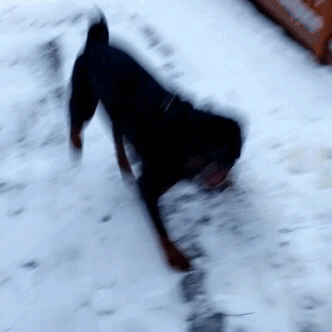
Koda! My best friends dog! He’s in love haha. I can’t go anywhere without him now.
26 notes
·
View notes
Photo

Our seas may be rough today, but take heart, the sky is blue, the sun is shining and calm waters will come. #AlaskaWillWait #WeMissYou #TripToAlaska #ResurrectionBay #NeverTooEarlyToBook2021 #Seward #Alaska #PostponeDon’tCancel #ViewFromMyFrontYard #Photography #RoughSeas #AlaskaVacation @visitseward https://www.instagram.com/p/B-vNkqCHes7/?igshid=1i94ndne1zx7y
#alaskawillwait#wemissyou#triptoalaska#resurrectionbay#nevertooearlytobook2021#seward#alaska#postponedon#viewfrommyfrontyard#photography#roughseas#alaskavacation
0 notes
Text
#Alaska#alaska#alaskacruise#alaskatravel#whittier#whittieralaska#alaskavacation#alaskatour#alaskacruises
0 notes
Photo

Considering your next vacation destination?
Considering your next vacation destination? Checkout our completely packaged vacations - offering you an extraordinary experience for a great price! http://bit.ly/2EpJLbN Our Completely Packaged Vacations include: Special prices Exclusive sailings on Norwegian Cruise Lines, Royal Caribbean, Celebrity Cruises and more Worldwide destinations Pre/Post hotel stays Transfers and parking passes Shore excursions Additional bonus amenities such as onboard credits Optional airfare packages from most major gateways
#completelypackagedvacation#vacationpackage#vacationdeals#traveldeals#caribbeanvacation#cruisevacation#alaskavacation#europeanvacation#vacaction#travel#vacationdestination
0 notes
Photo

Good Morning - 330 AM - from our hotel room in Anchorage, Alaska. Still staying light all night. Heading to the airport soon for a 6AM departure. Then a VERY short layover in Minneapolis. Then on to Chicago where we drove to before coming here. Jump in the van and head home. #homestead #alaska #PrattsInAlaska #alaskavacation (at Anchorage, Alaska) https://www.instagram.com/p/BzfmYmCgvrv/?igshid=19reww0df124y
0 notes
Photo
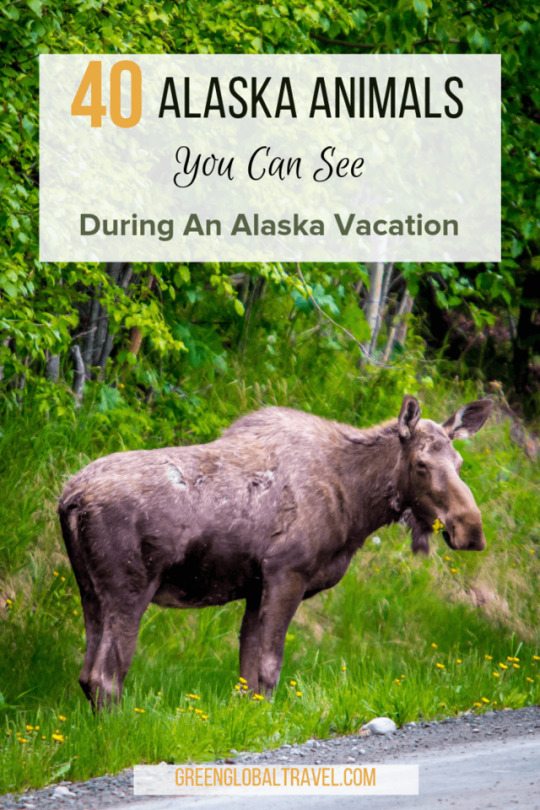
Original content owned & copyrighted by Green Global Travel.
My first encounter with n animals 20 years ago was arguably my most memorable.
We were stopped at a light on the 6-lane highway leaving Anchorage when we saw a mama Moose crossing the road, with an upset calf who clearly had no interest in doing so. Traffic came to a standstill as the drama played out, and we cheered when the youngster finally followed.
It was the first of many incredible sightings of wildlife, which includes approximately 2 mammal species, 525 bird species, 4 species of whales and porpoises, and 3700+ other species of marine life.
From n tundra animals (including Caribou, Wolves, and Arctic Foxes) and n bears (Black, Brown, and Polar) to endangered species such as Steller’s Sea Lions and Humpback Whales, the wildlife of is thrillingly diverse.
As influential as my first trip to Denali National Park was on the work we do now with Green Global Travel, our recent small ship n cruises with AdventureSmith Explorations were equally impressive in terms of animal sightings.
Exploring the Kenai National Wildlife Refuge, Kenai Fjords National Park, Glacier Bay National Park, and the Inside Passage, we saw more than 50 different animals that live in .
So here’s a guide to some of the most intriguing n animal species, including many of our favorite wildlife images from our latest trip.
READ MORE: Best Small Ship Cruises For Your World Travel Bucket List
N ANIMALS GUIDE
n Birds
n Bears
Other Land-Based n Animals
n Whales & Porpoises
Other n Marine Animals
N BIRDS
American Bald Eagle in ’s Kenai Fjords National Park
. AMERICAN BALD EAGLE
Though the United States national bird may be a rare sighting in the lower 48, n Bald Eagles are fairly ubiquitous.
They’re found in the state’s southern coastal areas all year-round, and along inland lakes and READ MORE: List of US National Parks by State (An Epic Guide)
Barrow’s Goldeneye Ducks in Kenai National Park,
2. BARROW’S GOLDENEYE
One of more than a dozen different species of n ducks found in the state’s many lakes and rivers, the Barrow’s Goldeneye rivals the Harlequin Duck among our favorite n birds.
Where the male Common Goldeneye has a jewel-tone green head, the Barrow’s Goldeneye is a gorgeous royal purple, with a white crescent below its yellow eye and a black-and-white back.
Females of both species are mottled gray, with tawny brown heads. We saw this mating pair near the Pedersen Glacier in Kenai Fjords National Park.
READ MORE: 40 Facts about the Hawaiian Goose (a.k.a.. Nene Goose)
Oystercatcher Bird in Kenai National Park,
3. BLACK OYSTERCATCHER
One of ’s most striking shorebirds, the Black Oystercatcher has an all-black body with a long red bill, red-ringed yellow eye, and pink legs.
You’ll typically find them wandering along the state’s rocky seashores, where they use their thick beak to pry and break open the shellfish they love to eat.
They can grow up to 8 inches tall, and have a loud, piercing whistle-like call. We saw this next to the lagoon in front of the Kenai Fjords Glacier Lodge.
READ MORE: 5 Beautiful Birds of the Galapagos Islands
Common Murres in ’s Inside Passage
4. COMMON MURRE
This species’ biggest claim to fame is that it is often mistaken for a Penguin due to its similar, tuxedo-like coloration.
The Common Murre, which grows up to 7 inches long, is actually shaped more like a duck, but with a longer more slender bill.
During our time in we only saw them in the open water, usually in large groups swimming in a line or v-formation. We saw this group while cruising ’s Inside Passage.
READ MORE: Penguins of Antarctica
5. COMMON RAVEN
Held as sacred among the indigenous Tlingit people, these humongous birds are anything but common when seen up close.
Frequently sighted along the coast (we saw quite a few of them while walking the streets of Juneau), they can grow up to 27 inches long. They boast a low, but loud croaking call that will definitely get your attention.
With its uniformly black feathers, shaggy head, and prominent bill, it’s easy to see why the Raven inspired Edgar Allen Poe’s famous gothic poem.
READ MORE: 0 Travel Books that Inspired My Love of Adventure
Pelagic Coromorants and Black-legged Kittiwakes in
6. PELAGIC CORMORANT
One of the more common n birds, this is one of three cormorant species found in the state. You’ll often see their nesting colonies on the rocky ledges of coastal cliffs.
Growing up to three feet, the Pelagic Cormorants’ crests are subtle, but can be identified by their orange throat patch, slender neck, and hooked bill.
You may also see them with their wings spread wide as they dry out in the sun. We spotted these nesting in Glacier Bay National Park.
READ MORE: Flightless Cormorant Mating Dance (Video)
Glaucous Winged Gull in Kenai National Park
7. GULLS
There are at least four different Gull species commonly spotted in . The most unique of these is the Bonaparte’s Gull, which is small and has a black head, thin bill, and reddish legs.
The most abundant is the Black-legged Kittiwake, which also has black-tipped wings and which you can expect to see every day.
Others include the Glaucous-winged Gull (which are common in coastal areas) and the Herring Gull (which are usually seen near inland lakes and rivers).
READ MORE: 30 Amazing Galapagos Islands Animals
Pine Grosbeak in Kenai National Wildlife Refuge,
8. PINE GROSBEAK
This resident species’ striking coloration may lead you to mistake it for a Cardinal from a distance, but up close the Pine Grosbeak looks much more like a Finch.
Growing up to 0 inches long, the male is rosy red with black wings, while the female is grey with a greenish head and rump.
Both have a black, cone-shaped bill, and are commonly seen at n bird feeders all throughout the year.
We saw this handsome male feeding alongside a female on a road inside the Kenai National Wildlife Refuge.
READ MORE: How to Attract Birds to Your Garden
Horned Puffins in
9. PUFFINS
There are two species of Puffins in , but they’re fairly easy to tell apart. The Horned Puffin has a white belly, an orange Parrot-like bill, and a distinctive black, fleshy “horn” above each eye.
The Tufted Puffin is mostly black, with long tufts of golden feathers that curl back from either side of its head.
Both are commonly seen in coastal waters, where they can “fly” underwater to feed on fish. We saw them fairly often throughout our n cruises in both Kenai Fjords National Park and the Inside Passage.
READ MORE: Top 7 Things to do in Iceland
Red Throated Loons at Pederson Glacier in Kenai National Park,
0. RED-THROATED LOON
Of the five species of loons in , the Red-throated Loon is arguably the most attractive.
Its head is medium gray, with a white-flecked black back, vertical black-and-white stripes on its nape, and a rusty red throat patch.
Like other loons, they can dive up to 250 feet to hunt for fish. They typically inhabit lakes and the Arctic coast in summer, and the southern coast in winter.
We saw this mating pair in a lagoon near the Pederson Glacier in Kenai Fjords National Park.
READ MORE: 20 Largest Lakes in the World by Continent
. RUFOUS HUMMINGBIRD
The only commonly-seen species of hummingbird in , these tiny beauties nest in the southern part of the state, migrating to READ MORE: 40 Amazing Costa Rica Animals
Semi-palmated Plover in
2. SEMI-PALMATED PLOVER
Typically found along ’s southern coastal areas, the Semi-palmated Plover is a beautiful brown shorebird.
They often nest along beaches, and will become persistently vocal if you get too close to their nesting area.
They’re identified by their white throat and breast, a black band around its neck, and a black-tipped orange bill. They use the latter to probe in mud and sand in search for the invertebrates on which they feed.
We saw this one scrounging on the beach near the Kenai Fjords Glacier Lodge.
READ MORE: The World’s Most Colorful Beaches
Snowy Owl
3. SNOWY OWL
Now commonly associated with Harry Potter, the Snowy Owl generally prefers marshes and tundra in the n Arctic and sub-Arctic regions.
But they’re increasingly migrating further south in winter, when their food sources tend to get more scarce.
Growing up to 27 inches long, these big, beautiful birds are mostly white, but with head, chest, and wings spotted with black bars. They’re one of the few species of Owls you may actually get to see hunting during the day.
READ MORE: Tundra Animals in Churchill, Manitoba
4. TRUMPETER SWAN
One of two species of swans found in , the Trumpeter Swan is larger than the Tundra Swan, growing to over five feet from bill-tip to tail.
Both species can be found in all sorts of water– lakes, marshes, ponds, and rivers– and both are all-white.
Other than size, the only easy way to tell them apart is their bill (the Tundra Swan’s is black) and their call. The Trumpeter’s is low and distinctively horn-like, while the Tundra’s is high and sounds like a “whoop.”
READ MORE: 20 Longest Rivers in the World by Continent
Willow Ptarmigan
5. WILLOW PTARMIGAN
The official State Bird, the Willow Ptarmigan is commonly referred to as a “bush chicken,” due primarily to the fact that nearly all n predators (including humans) like to eat them.
Short and stout, with feathers even on their toes, these birds change colors with the seasons.
Males are reddish brown and white in summer, while females are mottled brown, but both turn mostly white in winter to help them stay camouflaged on the snowy tundra.
I saw this one (and many others) during my Denali National Park trip back in 999.
READ MORE: A Guide to Ethical Eating When You Travel
N BEARS
Black Bears in at Mendenhall Glacier
6. BLACK BEAR
Though not quite as large as Brown Bears or Polar Bears, n Black Bears are an intimidating presence in many of the state’s forested areas.
Our tour guides frequently advised us on safety procedures in bear country, including always hiking with a buddy, carrying bear spray, talking loudly so that you don’t surprise them, and never running if you encounter a bear in the woods.
We saw them numerous times during our latest trip to , including several loners wandering in Kenai Fjords National Park and a mama bear with two adorable cubs along the Steep Creek Trail at the Mendenhall Glacier.
Despite their name, these omnivores can actually range in color from black and brown to cinnamon and even shades of blue (for camouflage near glaciers).
READ MORE: Black Bears in Alligator River NWR, North Carolina
Grizzly Bears at the Wildlife Conservation Center by Mike Jerrard
7. BROWN (GRIZZLY) BEAR
My personal favorite n animal, Brown Bears are noted for their size (up to seven feet), humped shoulders, and massive feet with razor-sharp claws.
There are three subspecies in Brown Bears in : One inhabits coastal areas and feeds mostly on salmon, while Grizzly Bears are found inland and further north (especially Denali National Park) and are smaller due to a more plant-based diet.
The more isolated Kodiak Island Bear subspecies is the largest terrestrial carnivore in the world.
READ MORE: Denali National Park, (America’s Last Frontier)
Polar Bear in the Arctic Tundra
8. POLAR BEAR
READ MORE: Polar Bear Fight in Churchill, Manitoba
OTHER N ANIMALS
American Beaver by skeeze from Pixabay
9. AMERICAN BEAVER
While you may not actually spot an n Beaver during your visit, you’ll almost certainly see their handiwork if you go rafting, canoeing, or kayaking down any major river or stream.
These large (up to four feet long), brown rodents use their remarkable teeth to fell trees into the water, gradually building elaborate dams.
They’re most active at dawn and dusk, when they emerge to feed on aquatic plants, bark, and grass, slapping their tails on the water as a warning if danger is imminent.
READ MORE: The 0 Best Canoe Trips (World Trael Bucket List)
20. ARCTIC FOX
Smaller than their red cousins, Arctic Foxes are perfectly adapted to their frigid habitat (which ranges from and Arctic READ MORE: Amazing Animal Facts (Animal Olympians)
Bison in Yellowstone National Park near Grand Geyser
2. BISON
Most people associate Bison (which are confused with, but technically not a species of Buffalo) with READ MORE: 0 Best National Parks in USA for Wildlife Watching
Caribou in Denali National Park,
22. CARIBOU
Caribou in , which are also known as READ MORE: Winter Adventures in Finnish Lapland
23. DALL SHEEP
As with the Caribou, both male and female Dall Sheep have horns. But the male’s are considerably more massive and coiled.
They often implement them for intense head-butting competitions, which are used to establish a hierarchy of dominance for mating purposes.
Dall Sheep in are typically seen on cliff edges in mountainous regions, where their white coats stand out in striking contrast to the dynamic green and gray landscapes.
READ MORE: 20 Best Mountains in the World
Gray Wolf by christels from Pixabay
24. GRAY WOLF
Easily the largest of ’s canine species, the Gray Wolf can grow to six feet and comes in colors ranging from white to black and all shades in between.
They’re found in approximately 85% of the state’s wilderness areas, living in packs of two to 30 animals.
The READ MORE: Endangered Species that Mate for Life
n Moose in the Kenai National Wildlife Refuge
25. MOOSE
I call the n Moose “the Camels of the tundra,” because they tend to be of a similar size (up to 9 feet tall), body type (huge, with long, thin legs and a pendulous snout), and disposition (ornery and unpredictable).
The Moose is the official State animal. But most ns we met were even more wary of Moose than Bears.
They tend to be found in forests near shallow water sources, but we saw a female in the Kenai National Wildlife Refuge right alongside the road, feeding on dandelions.
Females with young calves are extremely aggressive, and should be avoided at all costs.
READ MORE: The Moose Whisperer & The Coolest Moose in Sweden
Mama & Baby Mountain Goats in Glacier Bay National Park
26. MOUNTAIN GOAT
From a distance (which is usually how you’ll see them) you might mistake a Mountain Goat in for a Dall Sheep, since both are white, grow up to six feet, and prefer mountainous areas.
But the goat has longer, shaggier fur and short, straight black horns. They prefer high alpine meadows in summer, only going down towards the tree line in winter.
We spotted quite a few in the hills of Kenai Fjords National Park and Glacier Bay National Park’s Gloomy Knob area, including this mama goat with a baby climbing on her.
READ MORE: 40 Facts About the Markhor (National Animal of Pakistan)
Muskox in by David Mark from Pixabay
27. MUSKOX
Large and stocky, with long hair and prominent horns, these imposing cow-like creatures grow up to eight feet.
Though the native Muskox population in was hunted to extinction in the 800s, a herd was introduced from Greenland in the 930s.
Today there are thousands of Muskox in , including a domesticated farm in Palmer, a research project at the University of in Fairbanks, and wild herds roaming in western areas such as Bethel and Nome.
READ MORE: Wildlife Conservation Center (Photo Gallery)
Red Squirrel at Kenai Glacier Lodge,
28. RED SQUIRREL
A common sighting in ’s forests, the Red Squirrel is actually a rusty olive color with a white belly and a fluffy reddish-orange tail.
You’ll likely hear their noisy chatter before you see them scurrying quickly through the forest to gather their winter supply of berries, nuts, and seeds.
Look for burrows around the base of trees, where they typically hide their cache of food.
READ MORE: The 20 Biggest Forests in the World
Sitka Deer by Hillebrand, Steve [Public domain]
29. SITKA BLACK-TAILED DEER
Found primarily in the coastal rainforests of southern , the Sitka Black-tailed Deer is relatively small, averaging under five feet tall.
The species changes in coloration to help them stay camouflaged, from reddish-brown coats in summer to gray in winter.
Males shed their antlers annually between January and March.
READ MORE: 40 Fascinating Facts About the Saola (a.k.a. Asian Unicorn)
N WHALES & PORPOISES
Beluga Whales by Mike Johnston via CC 2.0
30. BELUGA WHALE
Usually found in coastal waters and shallow bays, this small (around 3 feet long on average) white whale has a pronounced forehead filled with fatty tissue (called the melon).
The Beluga Whale is also known as the “sea canary” because of its distinctive high-pitched squeaks, squeals, and whistles, which it uses to find prey and communicate with others.
The subpopulation of ’s Cook Inlet is considered endangered, and is currently protected under the U.S. Endangered Species Act.
READ MORE: North Atlantic Right Whale Facts
Bowhead Whale by Kate Stafford of the Bering Land Bridge National Preserve, CC BY-SA 2.0
3. BOWHEAD WHALE
Although we never saw a Bowhead Whale during our two weeks in Southeast , the species deserves special mention as ’s State Marine Mammal.
They earned this distinction because they’re the only whales in that spend their entire life in Arctic waters. Bowhead Whales have also historically been an important food source for the indigenous people of ’s northwestern coastal communities.
Growing up to 60 feet long, Bowheads have an unusual arched jaw and a mouth/head that can be up to /3 of their total body length.
READ MORE: 40 Fascinating Facts About Blue Whales
32. DALL’S PORPOISE
One of two kinds of porpoise we saw in (the other being the more dull-colored Harbor Porpoise), the Dall’s Porpoise looks a bit like a tiny (7-foot-long) Killer Whale.
It has a shorter snout and a stockier body than a dolphin, with black coloring offset by a big white belly patch.
They usually travel in pods ranging from 2 to 20 animals, and are fond of playing in the wake of ships (which is where we saw them during our Inside Passage cruise).
READ MORE: 5 Harmful Traditions & Cultural Practices
Humpback Whale Closeup
33. HUMPBACK WHALE
These gentle giants (which can grow up to 50 feet long) are often seen close to shore along ’s southern coast during their summer migration season.
You usually only get glimpses of their humped backs and small dorsal fins as they dive to feed on small schooling fish. But every so often one will show you their long flippers or tail flukes, which are usually white.
Despite many whale watching tours, I’ve only ever seen them breach from a distance. Listen for their haunting calls when the water is calm.
READ MORE: Whales That Live in Antarctica
Orcas in (Kenai National Park)
34. Orca (a.k.a. Killer Whale)
Though they’re commonly known as the Killer Whale, Orcas are not actually a whale at all, but a member of the dolphin family.
The “killer” part comes from the fact that pods of up to 40 Orcas will hunt large marine animals as a pack, almost like “sea wolves.”
With their long black dorsal fins and white-spotted eyes and bellies, Orcas in are a fairly common sight in Kenai Fjords National Park, the Inside Passage, and other n waters.
READ MORE: Southern Resident Killer Whales
OTHER N MARINE ANIMALS
King Crab by National Oceanic and Atmospheric Administration [Public domain]
35. N KING CRAB
Second only to Sockeye Salmon among the state’s most valuable commercial species, the n King Crab lives up to its name by growing up to a whopping five feet wide.
Typically found in waters up to 200 feet deep, these big red wonders have pointy spikes covering most of their heads, six legs, and claws.
The right claw is usually much larger on adult crabs, and often used as a weapon during fights. Their meat is widely considered a READ MORE: 60 Weird Animals Around the World
Harbor Seals at Holgate Glacier in Kenai Fjords National Park,
36. HARBOR SEAL
One of the most difficult species of wildlife in to photograph, Harbor Seals (a.k.a. Leopard Seals, due to their spotted coats) are shy but plentiful.
We saw many of them throughout the Inside Passage, Glacier Bay, and Kenai Fjords, particularly around icebergs and “berglets” (as National Park Ranger Rebekah Weirda liked to call them).
They’re easiest to see on the ice floes, where they go to rest and bear their young away from the watchful eyes of predators.
READ MORE: 30 Antarctic Animals You Can See on an Antarctica Cruise
Steller’s Sea Lions in Kenai Fjords National Park
37. STELLER’S SEA LION
Also known as Northern Sea Lions, these pinnipeds can grow to 0.5 feet long and weigh 000+ pounds, with males up to three times as large as females.
Around 70% of these endangered animals inhabit the waters around , gathering seasonally to breed and raise pups in rookeries used year after year.
We saw several Steller’s Sea Lions in Kenai Fjords National Park that had been tagged as part of a scientific study on their declining population numbers.
READ MORE: Swimming with Sea Lions (Galapagos Islands)
38. SALMON
n Salmon is not only the state’s commercial export, but they’re also a huge tourism draw once fishing season opens.
We heard tales of the Kenai River being lined with hundreds of fishermen standing shoulder-to-shoulder during peak season, occasionally competing with the bears for their catch.
In addition to Sockeye (or Red Salmon), Chinook (King Salmon), Coho (Silver Salmon), and Pink (Humpbacked) n Salmon are also popular.
READ MORE: Fishing Mobile Bay & the Mobile-Tensaw Delta
Sea Otters in (Kenai National Park)
39.��SEA OTTER
Although they may look cute and small from a distance, these adorable n animals can actually grow to reach 6 feet long and more than 70 pounds.
Unlike its cousin, the Northern River Otter, the Sea Otter only inhabits saltwater (preferably kelp beds close to rocky coastlines).
Most of the Sea Otters we spotted were lying on their backs, eating, sleeping, or carrying their young. They’re also known to use stones to crack open the Sea Urchins and shellfish on which they feed.
READ MORE: Hairy-Nosed Otter (Endangered Species)
Ochre Sea Star at Kenai Glacier Lodge
40. SEA STARS
We learned just how many different types of Sea Stars (a.k.a. Starfish) there are in during a walk along the shore of Kenai Fjords National Park at low tide.
The Bat Star was my favorite: Growing up to 0 inches, with short arms and wide bodies, Bat Stars range in color from white to vibrant orange and red.
My daughter loved the striking patterns of the Ochre Sea Stars pictures above, which are a common sight in tide pools and range from yellow and orange to purple and brown. –Bret Love; photos by Allie Love & Bret Love unless otherwise noted
Our trip to was partly hosted by AdventureSmith Explorations. But our opinions remain our own, and we will never compromise our integrity to our readers. To learn more about planning an n Vacation, contact AdventureSmith Explorations at 877-720-2875 or [email protected].
The post n Animals: 40 Species You Can See During Your Vacation appeared first on Green Global Travel.
#Alaska#AlaskaCruise#AlaskaTravel#AlaskaVacation#AlaskaWildlife#AlaskaWildlifeNature#AlaskaWildlifePhotography#AlaskaWildlifeKillerWhales#AlaskaWildlifeBaldEagle#AlaskaWildlifeBabyBears#AlaskaAnimals#AlaskaAnimalsNationalParks#AlaskaAnimalsBucketLists#AlaskaAnimalsPictures#AlaskaAnimalsBabyBears#AlaskaBucketList#>forests</span></strong></a>#008000;#><strong>Polar#><strong>Russia</strong>#>Yellowstone#><a#><strong>Wolf</strong></span></a> is
0 notes
Photo
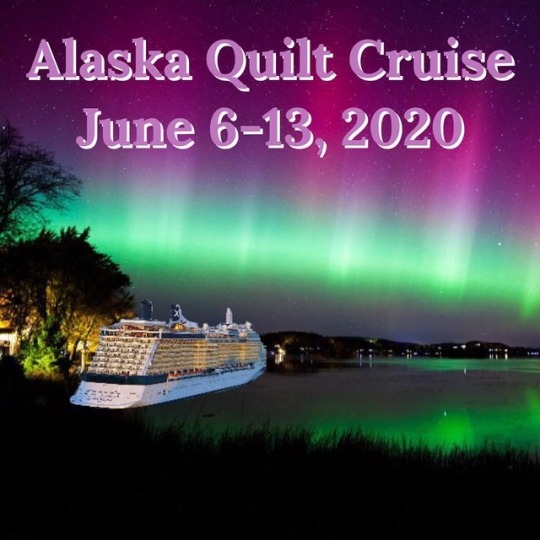
Big News! Blue Bear Quilts is going to Alaska. Would you like to go to Alaska? Would you like to quilt on a cruise? Why not do both? There are quilt shops in every port. With this cruise on the Holland America Eurodam not sailing until June 2020, you have plenty of time to pay for a trip of a lifetime. Treat yourself, or take your sweetheart, or your family, on a trip to Alaska’s inside passage and quilt while the ship is at sea. You can make payments over time. Call Michelle at Quilt Retreat at Sea 210-858-6399 to book your Alaskan Quilting Adventure now. #quilting #quiltcruise #quiltretreat #quiltretreatatsea #quiltvacation #quiltclass #ilovetoquilt #quiltfun #alaska #insidepassage #alaskavacation #alaskacruise #hollandamerica https://www.instagram.com/p/BsI2A0MnwWa/?utm_source=ig_tumblr_share&igshid=2k1wrajglrdg
#quilting#quiltcruise#quiltretreat#quiltretreatatsea#quiltvacation#quiltclass#ilovetoquilt#quiltfun#alaska#insidepassage#alaskavacation#alaskacruise#hollandamerica
0 notes
Photo
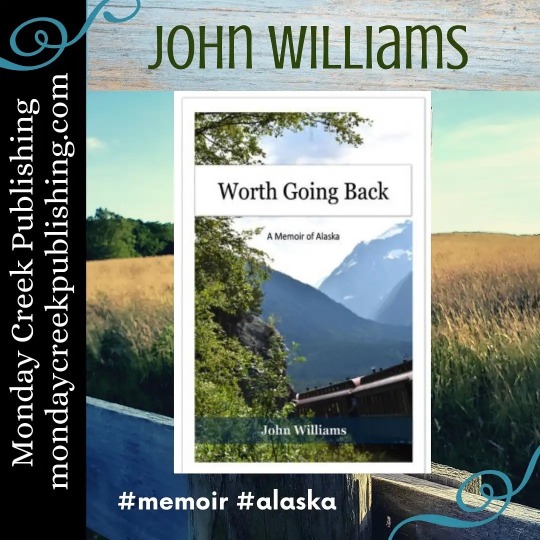
July Featured Author John Williams #alaska #traveljournal #alaskajournal #travelalaska #camping #alaskavacation #crosscountry #books #ohiowriter #author #writingcommunity #reader #5starbooks #readingcommunity #journalist #travelwriter #travel #storyteller (at Monday Creek Publishing) https://www.instagram.com/p/CRsRtsDlkpB/?utm_medium=tumblr
#alaska#traveljournal#alaskajournal#travelalaska#camping#alaskavacation#crosscountry#books#ohiowriter#author#writingcommunity#reader#5starbooks#readingcommunity#journalist#travelwriter#travel#storyteller
0 notes